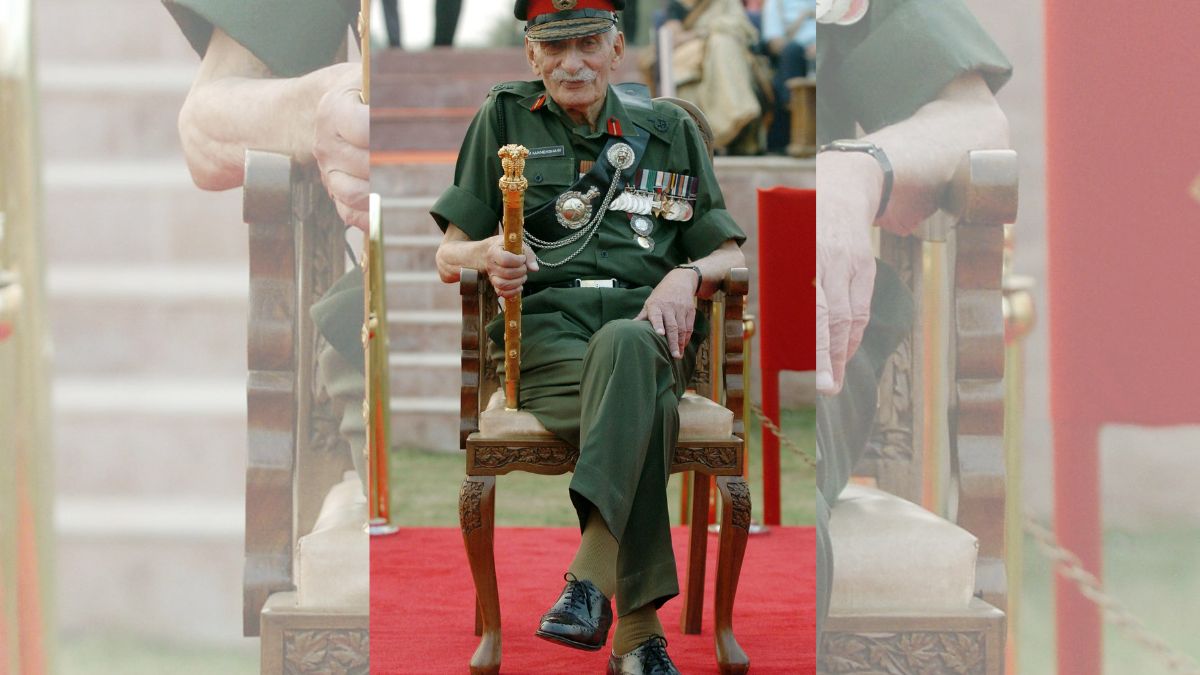India’s three war heroes, Field Marshal Sam Manekshaw, Brigadier Mohammad Usman and Major Somnath Sharma, have been added to the curriculum of the National Council of Educational Research and Training (NCERT) for the 2025-26 academic year.
The Union Ministry of Defence (MoD) announced on Thursday (August 7) that the chapters on the life and sacrifices of Manekshaw, Usman, and Sharma will be included in the syllabus for Class 8 (Urdu), Class 7 (Urdu), and Class 8 (English), respectively. The move aims to instil students with “inspirational narratives of courage and duty".
Let’s take a closer look.
Who was Sam Manekshaw?
Sam Hormusji Framji Jamshedji Manekshaw, popularly known as Sam Manekshaw, was India’s first officer to be conferred the rank of Field Marshal.
Born on 3 April 1914 in Amritsar, British India, Sam Manekshaw is hailed for his exceptional leadership.
During the Burma War with Japan in 1942, he sustained several bullet injuries. After Independence, Manekshaw, a Parsi, chose India as his home and was transferred to the Gorkha Rifles, where he earned the title Bahadur.
He played a crucial role during the India-Pakistan war between 1947 and 1948.
Sam Manekshaw was appointed as the Indian Army chief by Prime Minister Indira Gandhi in July 1969. One of the most defining moments of his career was the 1971 Indo-Pakistan War, which led to the liberation of Bangladesh. As the Chief of the Army Staff, his leadership led the Indian Army to victory over Pakistan.
Manekshaw was honoured with the Padma Vibhushan and Padma Bhushan, India’s second and third-highest civilian awards, respectively.
Known for his wit, he remains one of the only two military leaders to become a Field Marshal.
Impact Shorts
More ShortsWho was Mohammad Usman?
Brigadier Mohammad Usman is remembered as the ‘Lion of Naushera’.
He was pivotal in the recapture of Jhangar and Naushera in Jammu and Kashmir during the 1947-48 war between India and Pakistan.
Born on July 15, 1912, in Uttar Pradesh’s Azamgarh, Usman’s father was a police officer.
Usman joined the Baluch Regiment of the British Indian Army in 1934. During the partition, the Brigadier stayed in India even though he was offered a plum post in the Pakistani Army by Muhammad Ali Jinnah, reported The Statesman.
Brigadier Usman was commanding the 50 (Independent) Parachute Brigade in Jammu and Kashmir during the 1947-48 Indo-Pak war. The Pakistani Army, along with Pashtun tribal fighters, launched an attack to conquer vital regions in Kashmir, especially Naushera, located in the Rajouri district.
Despite being outnumbered, the Brigadier did not bow down. Instead, he reportedly told his men, “Do not retreat an inch. Fight to the last man and the last bullet.”
Under his leadership, the Indian soldiers defended Kashmir and also forced the enemies to retreat.
Brigadier Usman was martyred during shelling in Jhangar on July 3, 1948. He was posthumously awarded the Maha Vir Chakra (MVC), India’s second-highest wartime gallantry award.
Who was Somnath Sharma?
Major Somnath Sharma was India’s first Param Vir Chakra awardee. Born on January 31, 1922, in Himachal Pradesh’s Kangra, he was commissioned in the 4th battalion of the Kumaon Regiment in October 1942.
Major Somnath Sharma led the ‘‘D’’ Company of 4 Kumaon and established a base at Budgam against the on November 3, 1947, according to a defence spokesperson.
On November 3, 1947, Major Somnath Sharma led the ‘D’ Company of 4 Kumaon to defend the Srinagar airport against around 500 Pakistani forces approaching Srinagar from the northern side. Although he was injured and India faced heavy casualties, Major Sharma showcased extraordinary bravery.
He encouraged his men to continue fighting, even exposing himself to enemy fire. Sharma filled magazines for light machine gunners despite having his hand injured. He eventually died due to a mortar shell. However, his company held to its position for six hours until reinforcements arrived.
His last message before his death reportedly was: “The enemy is only 50 yards from us. We are heavily outnumbered. We are under devastating fire. I shall not withdraw an inch but will fight to the last man and the last round.”
With inputs from agencies
)